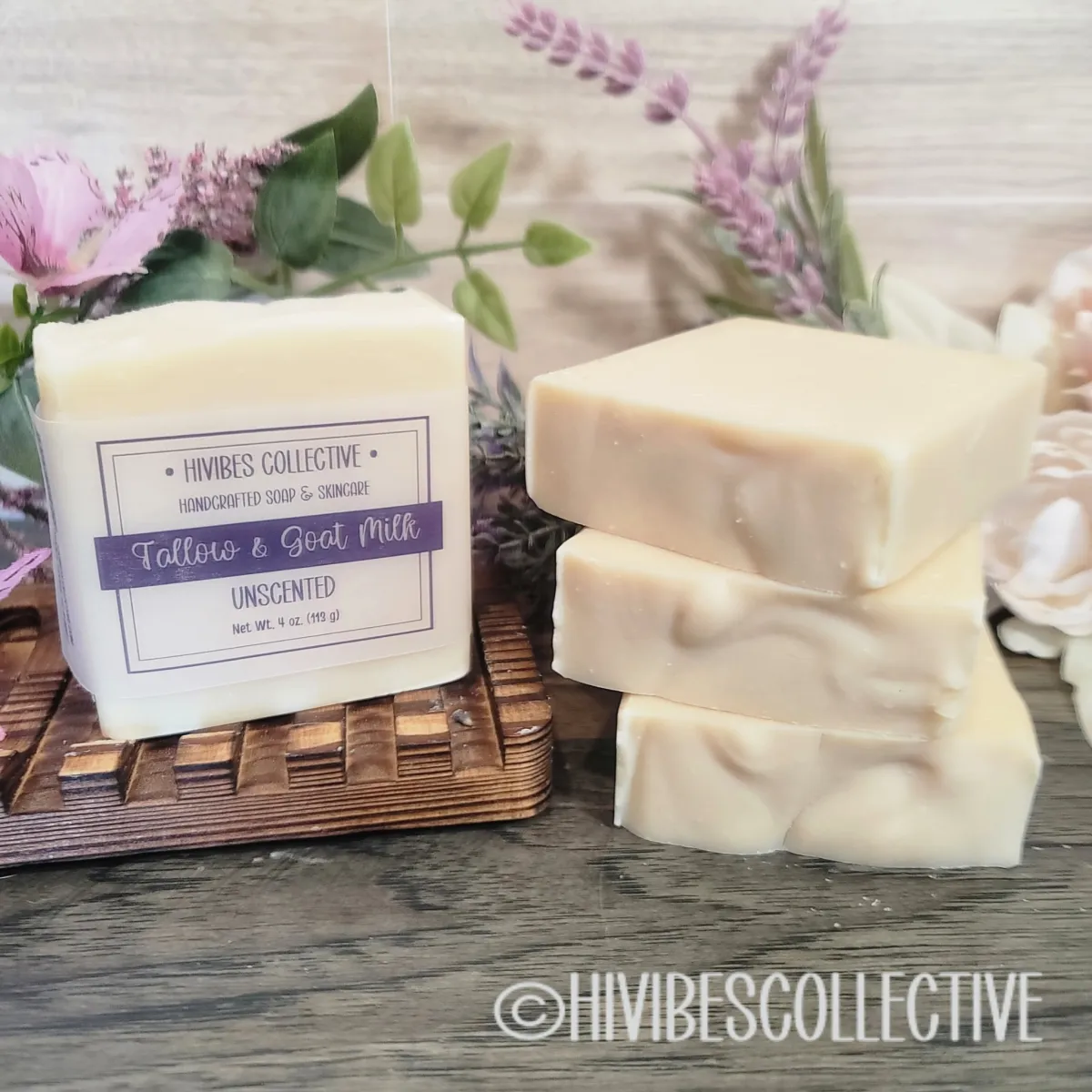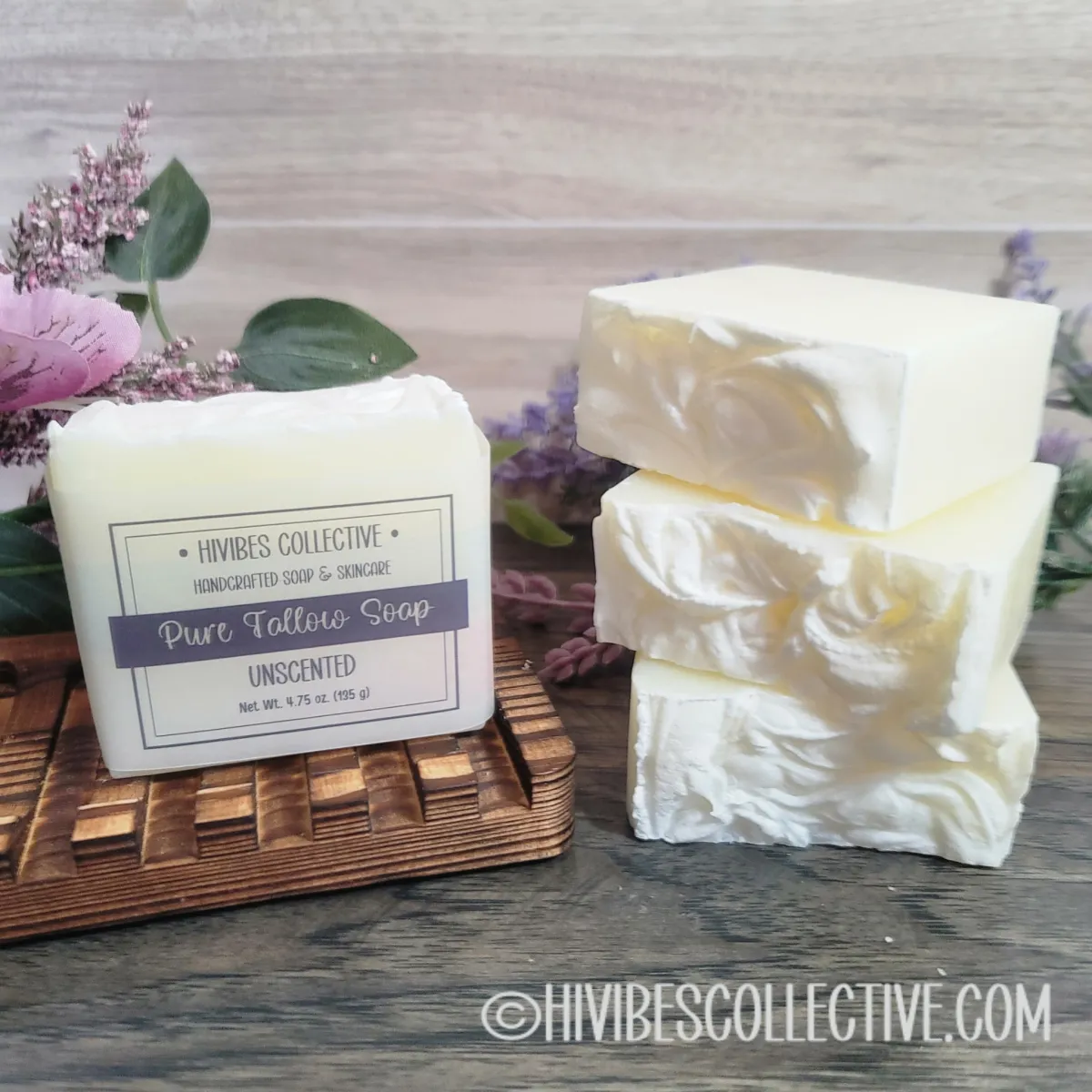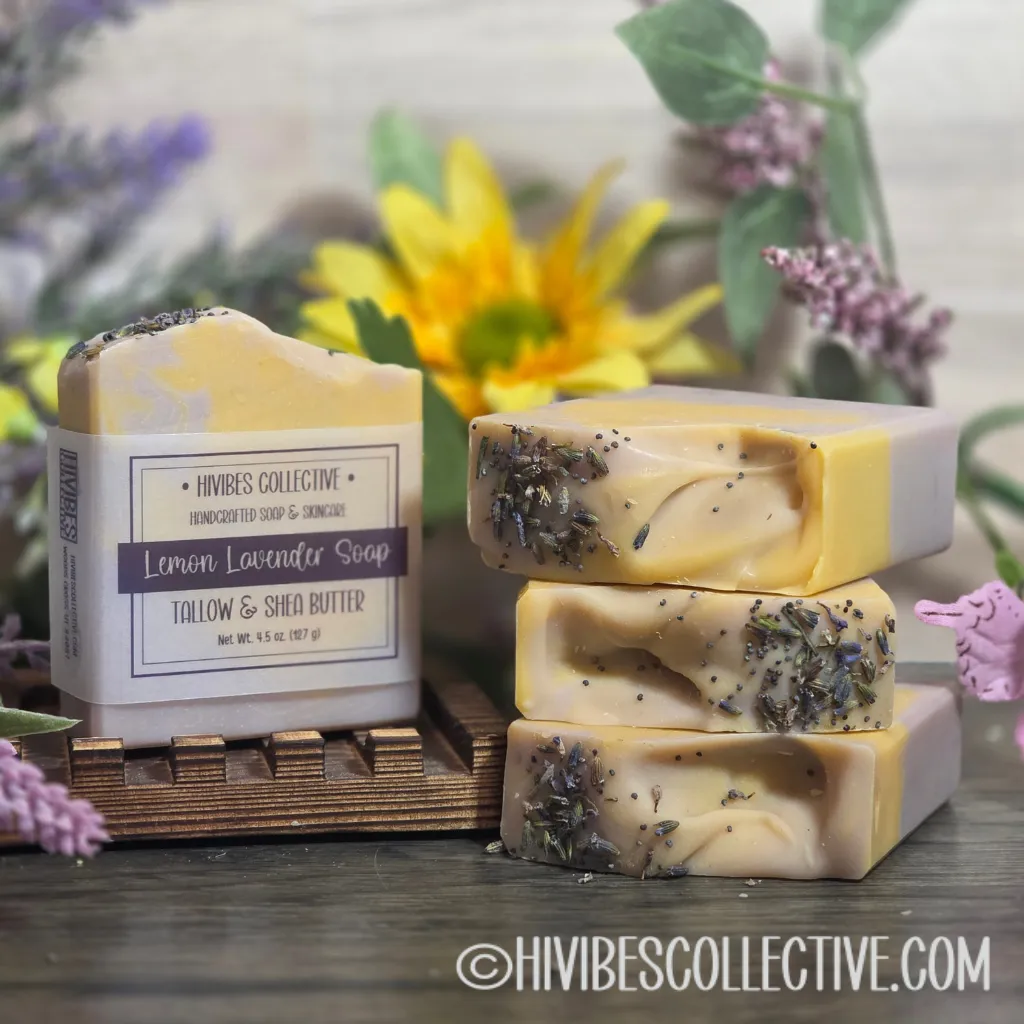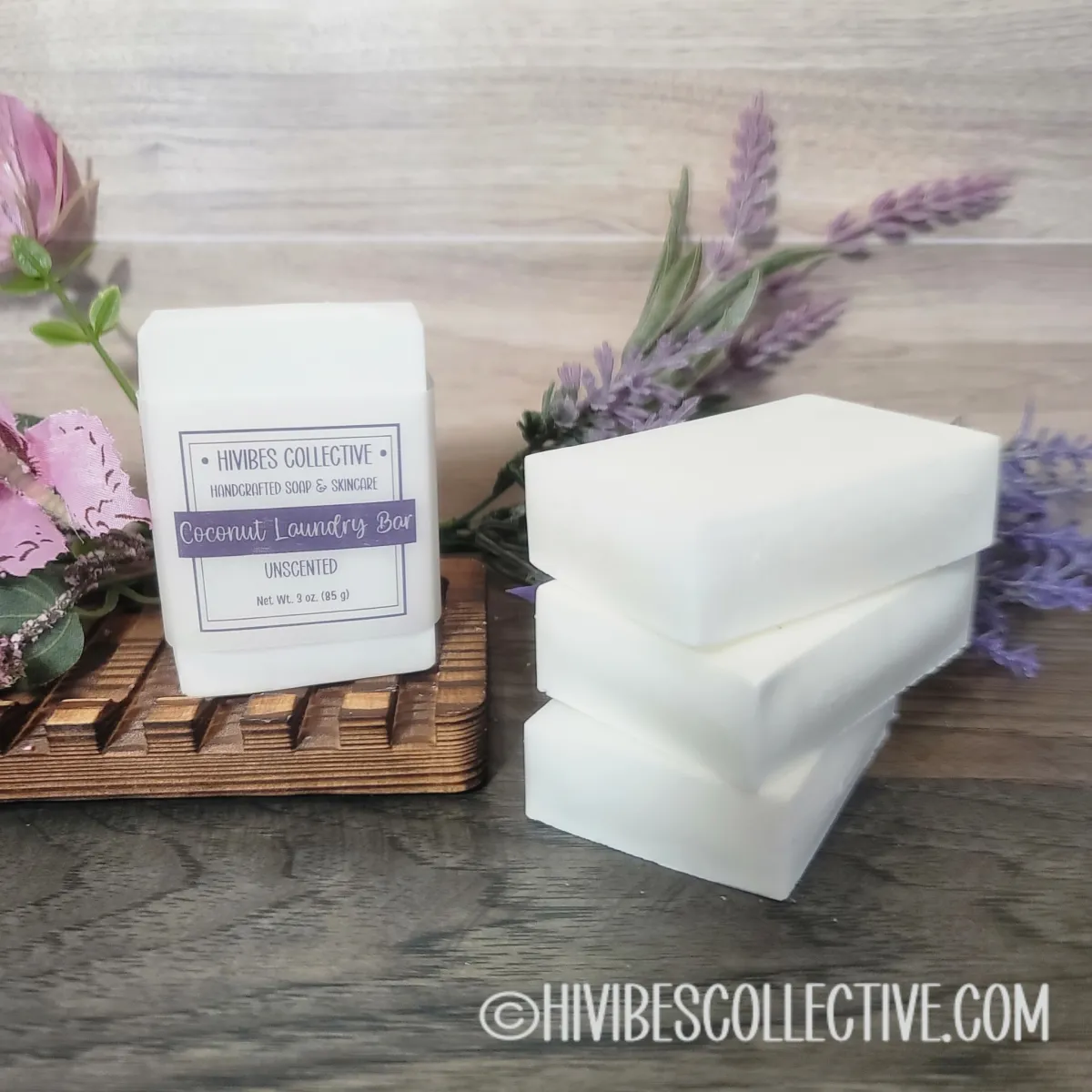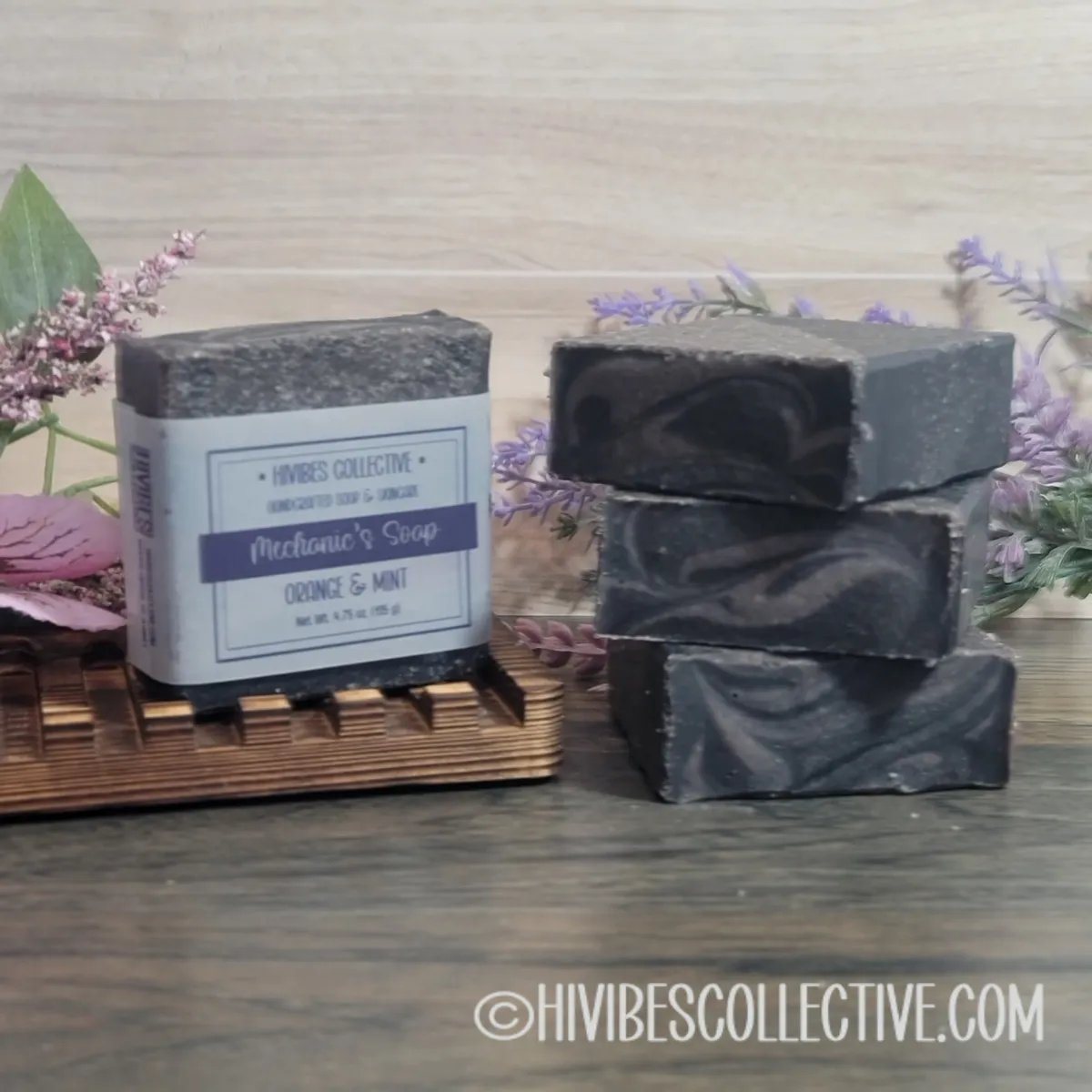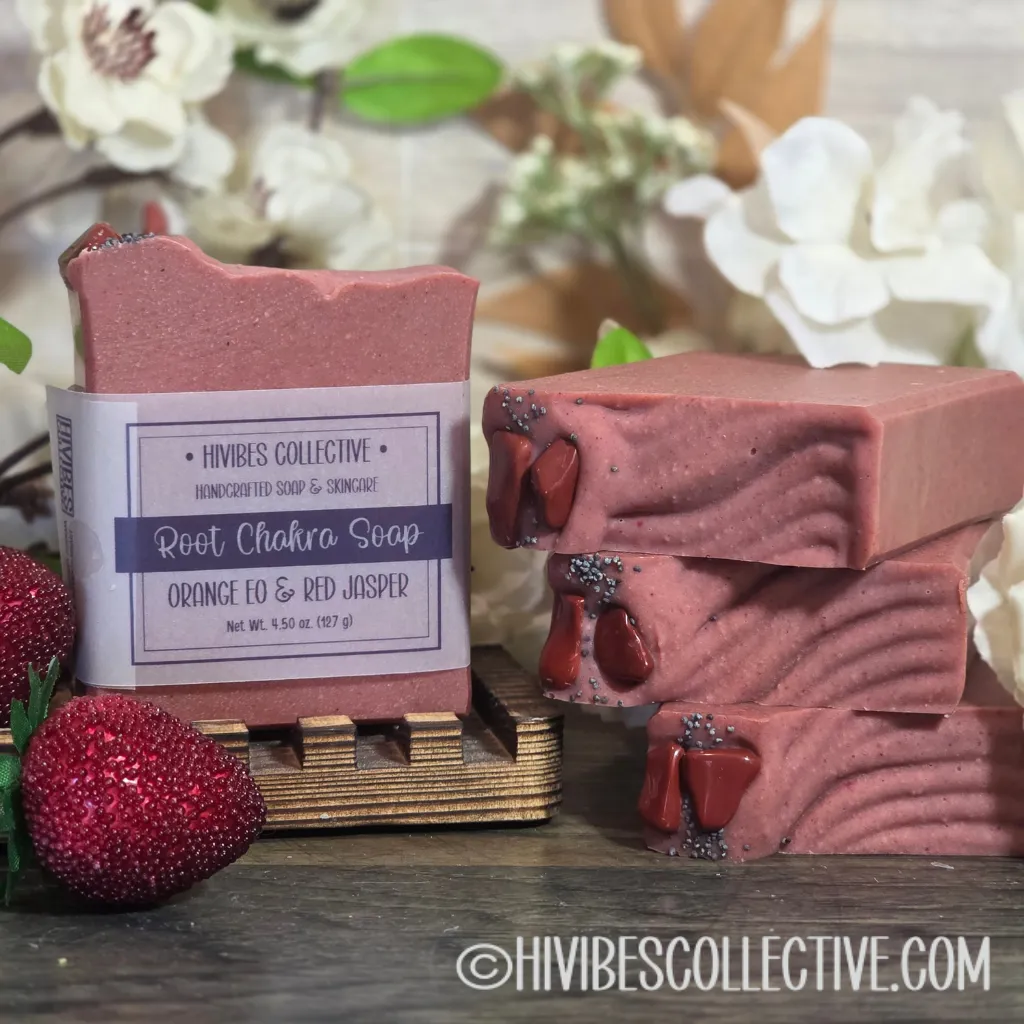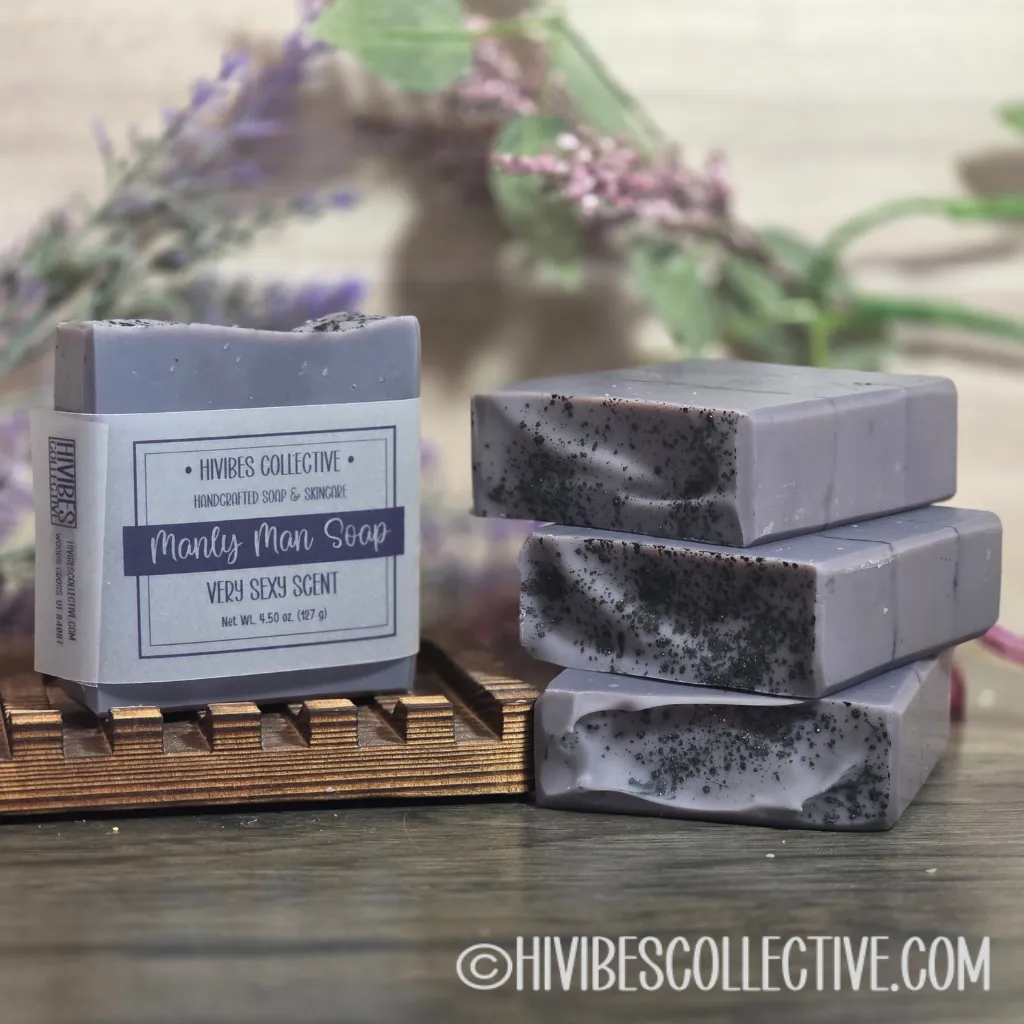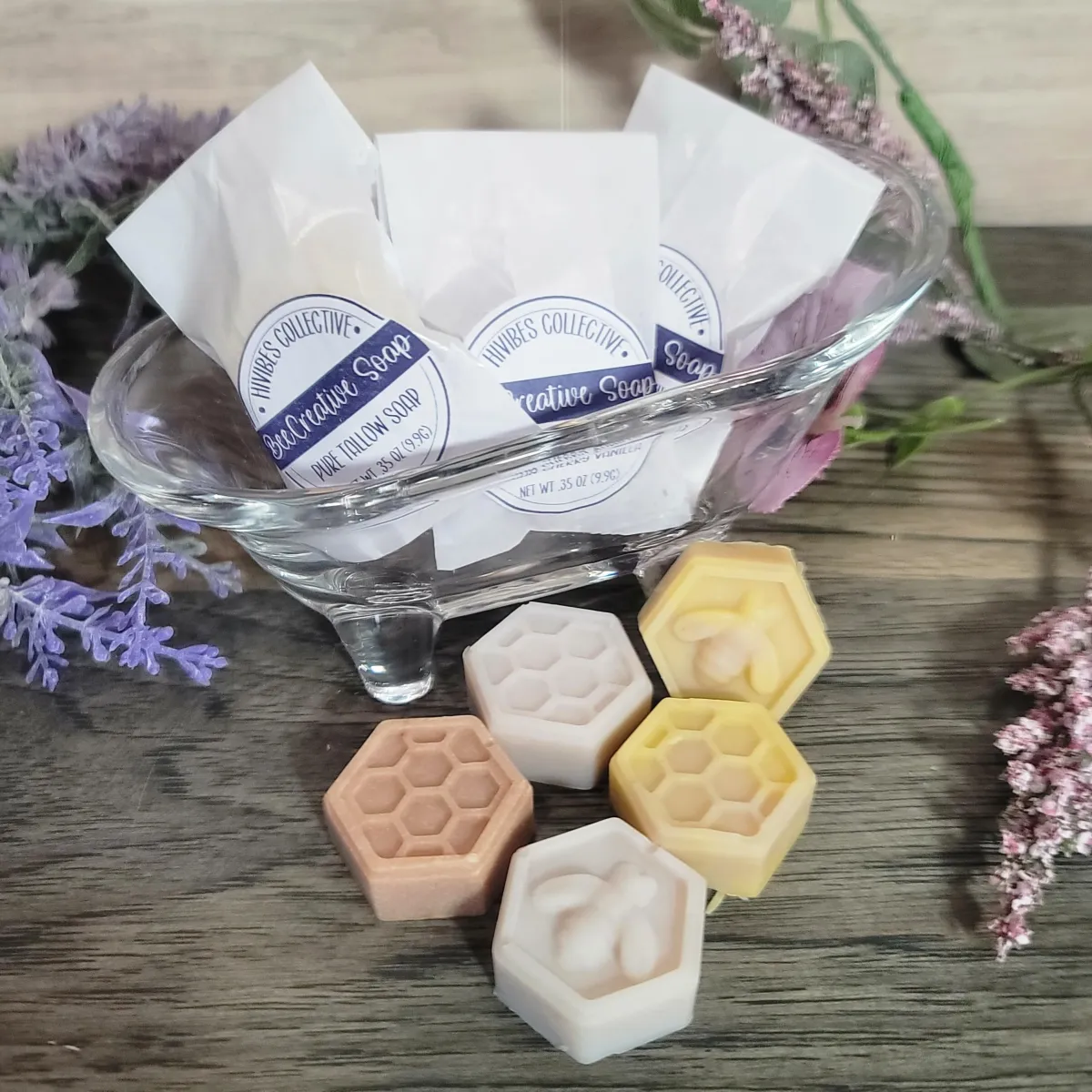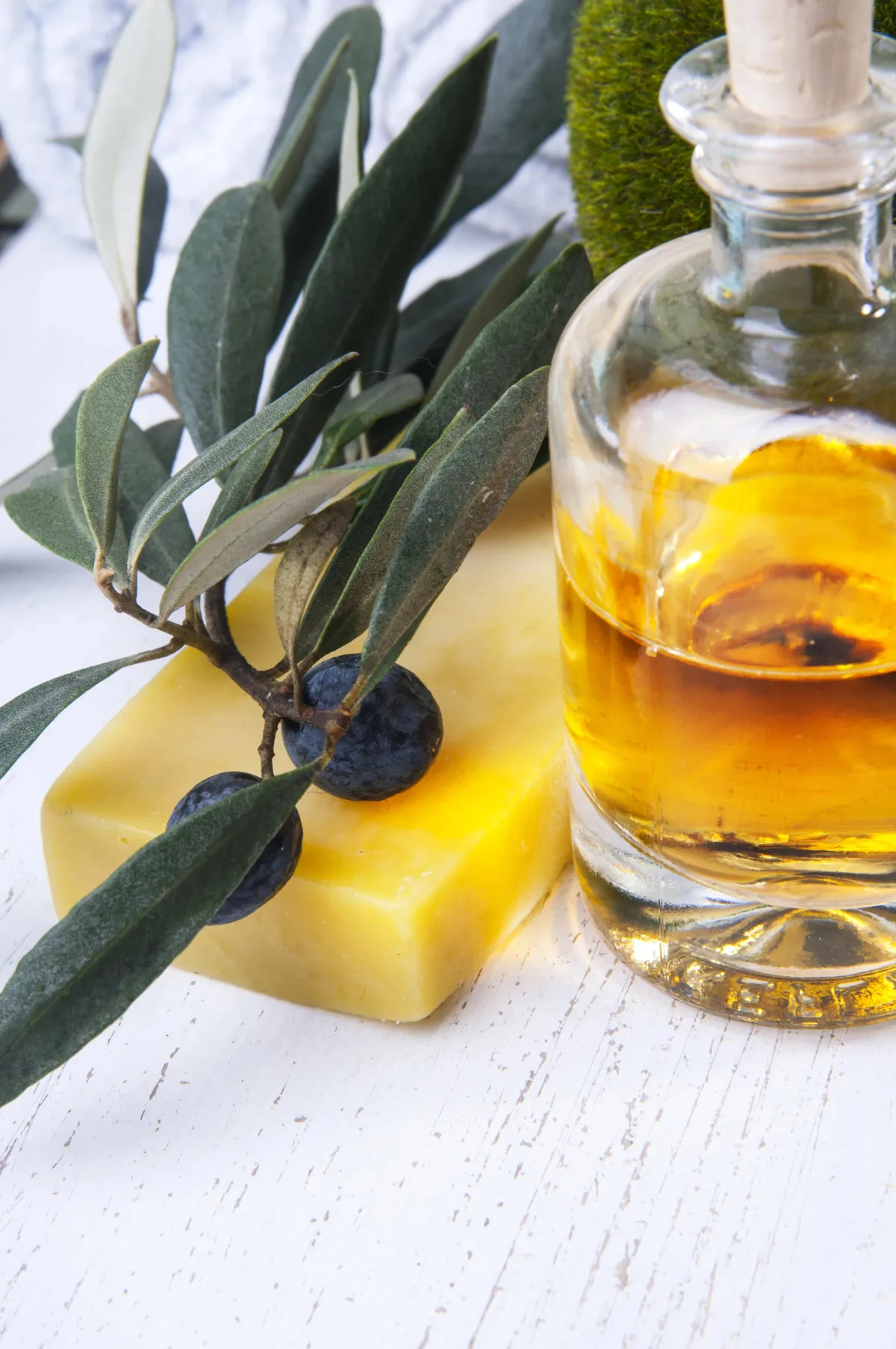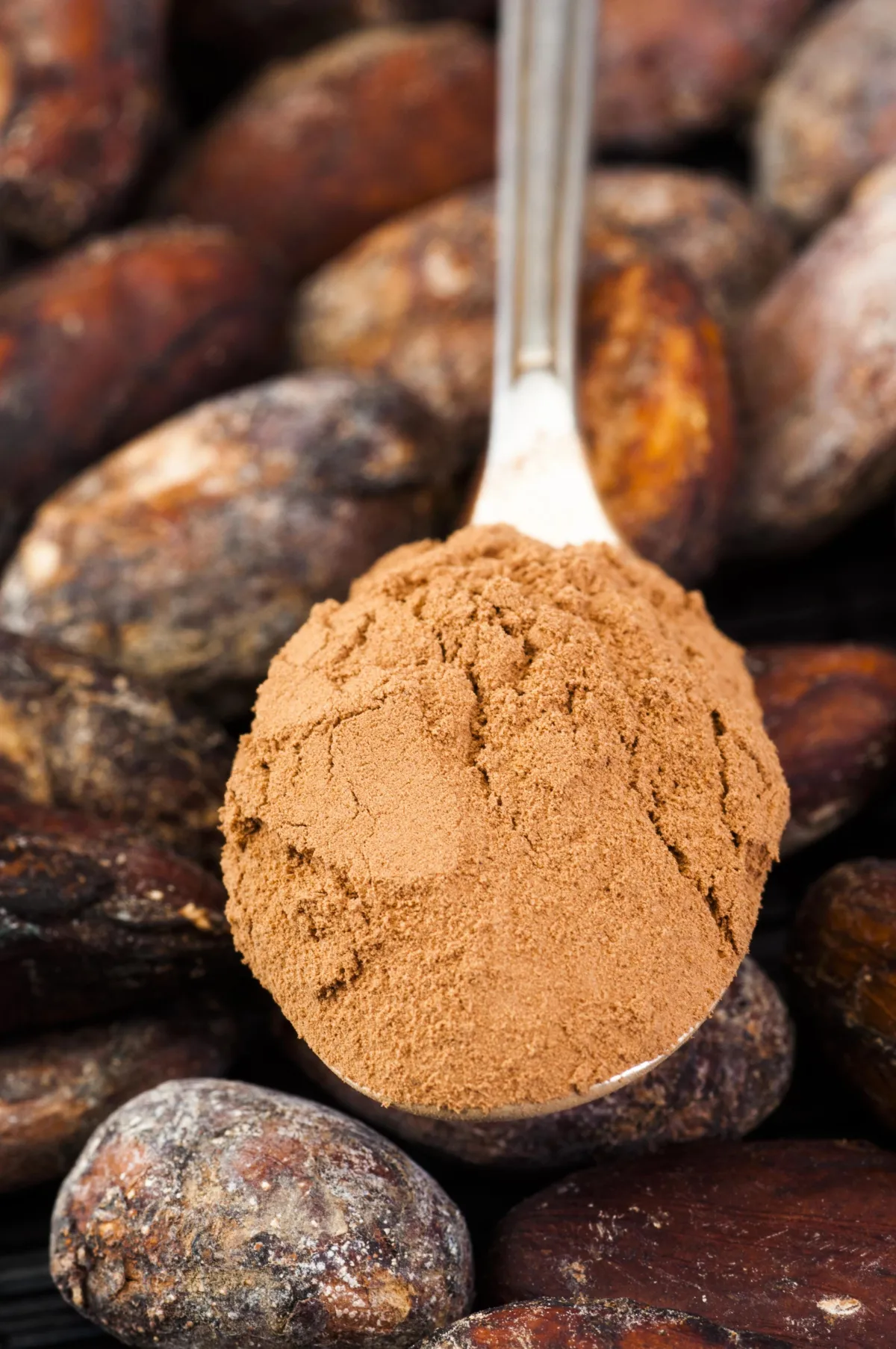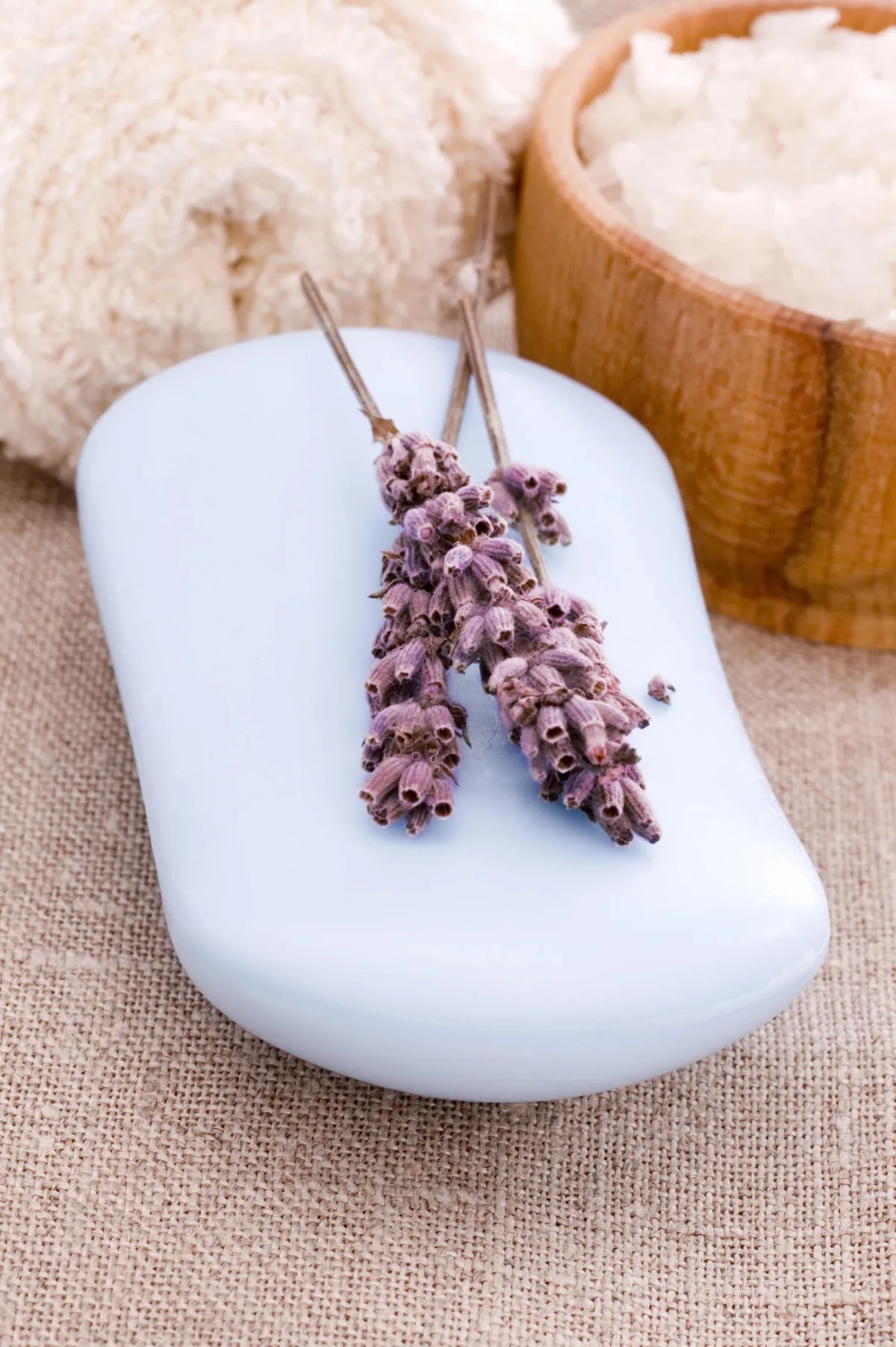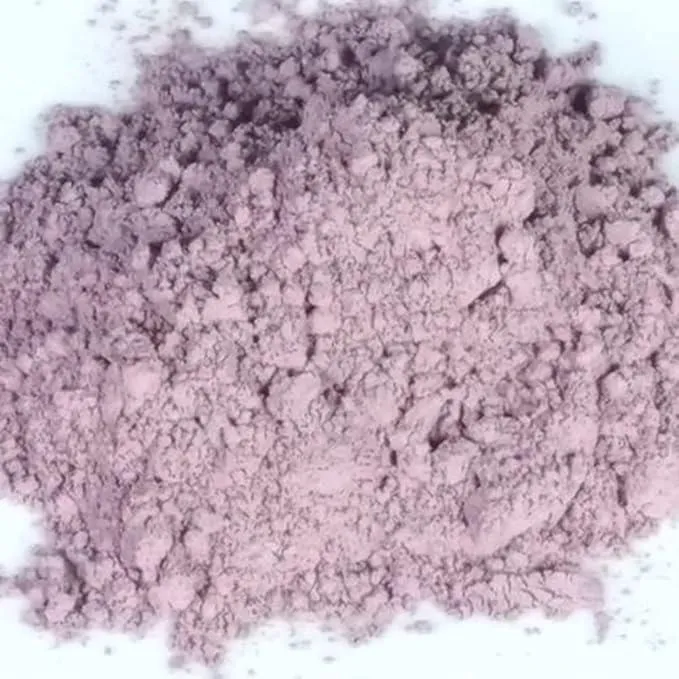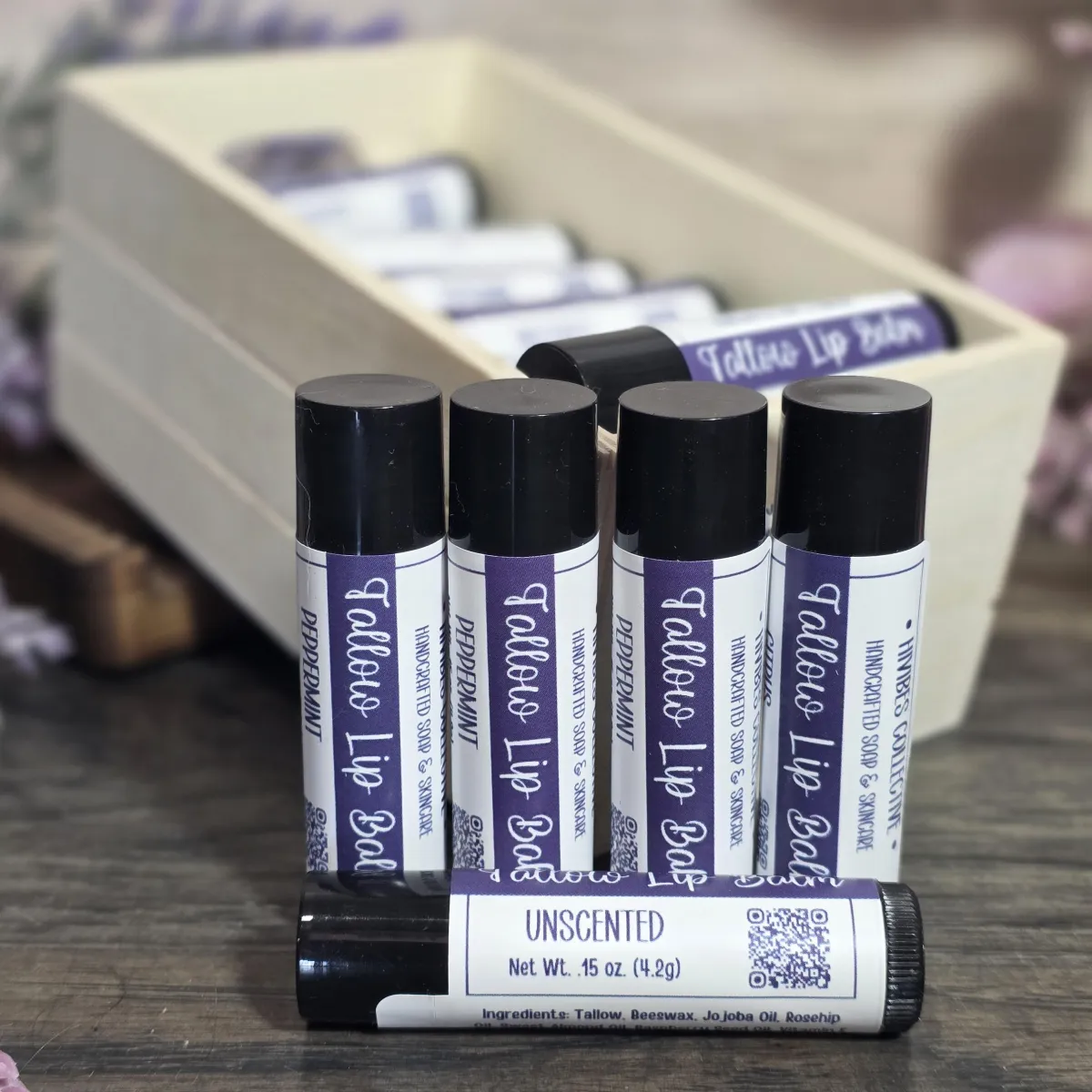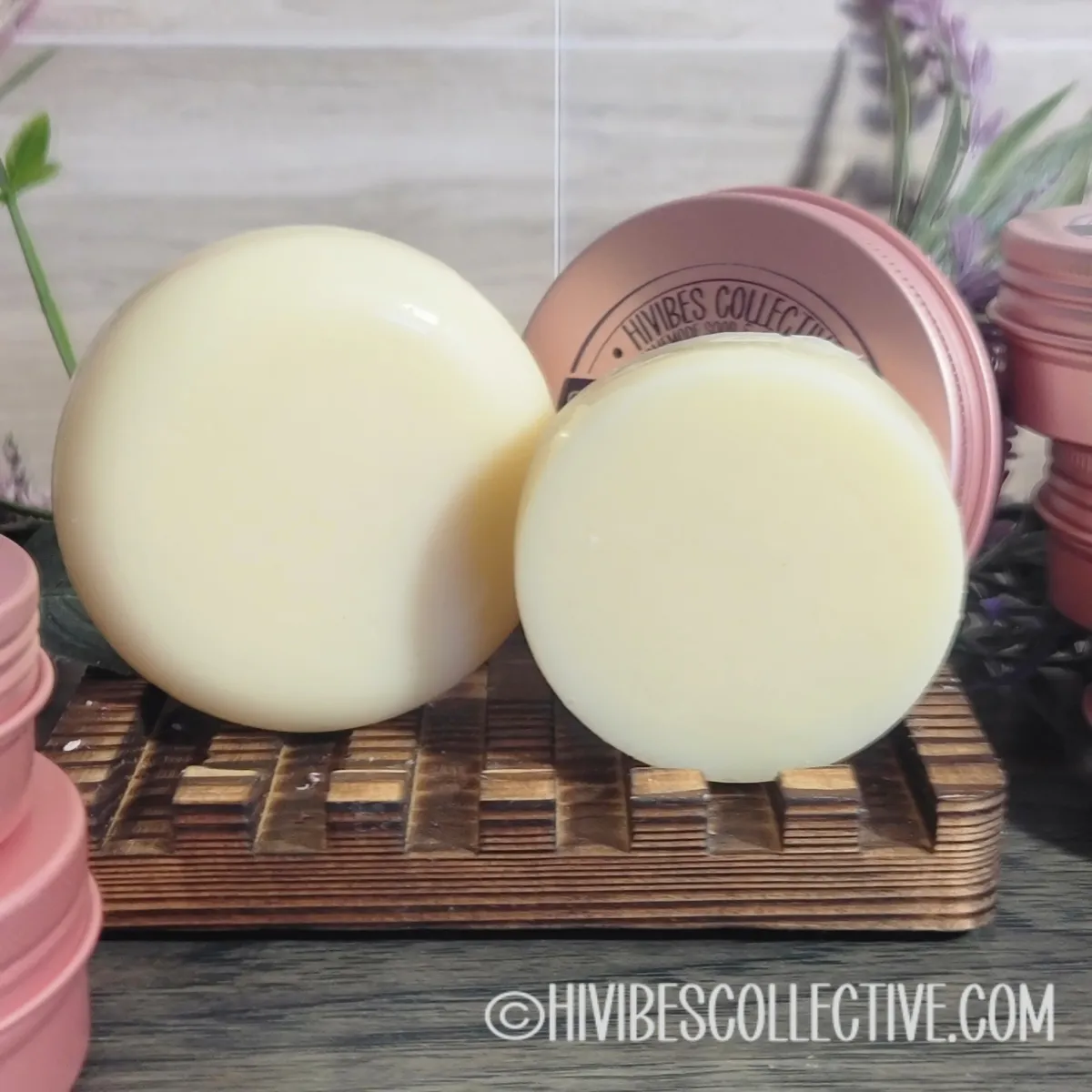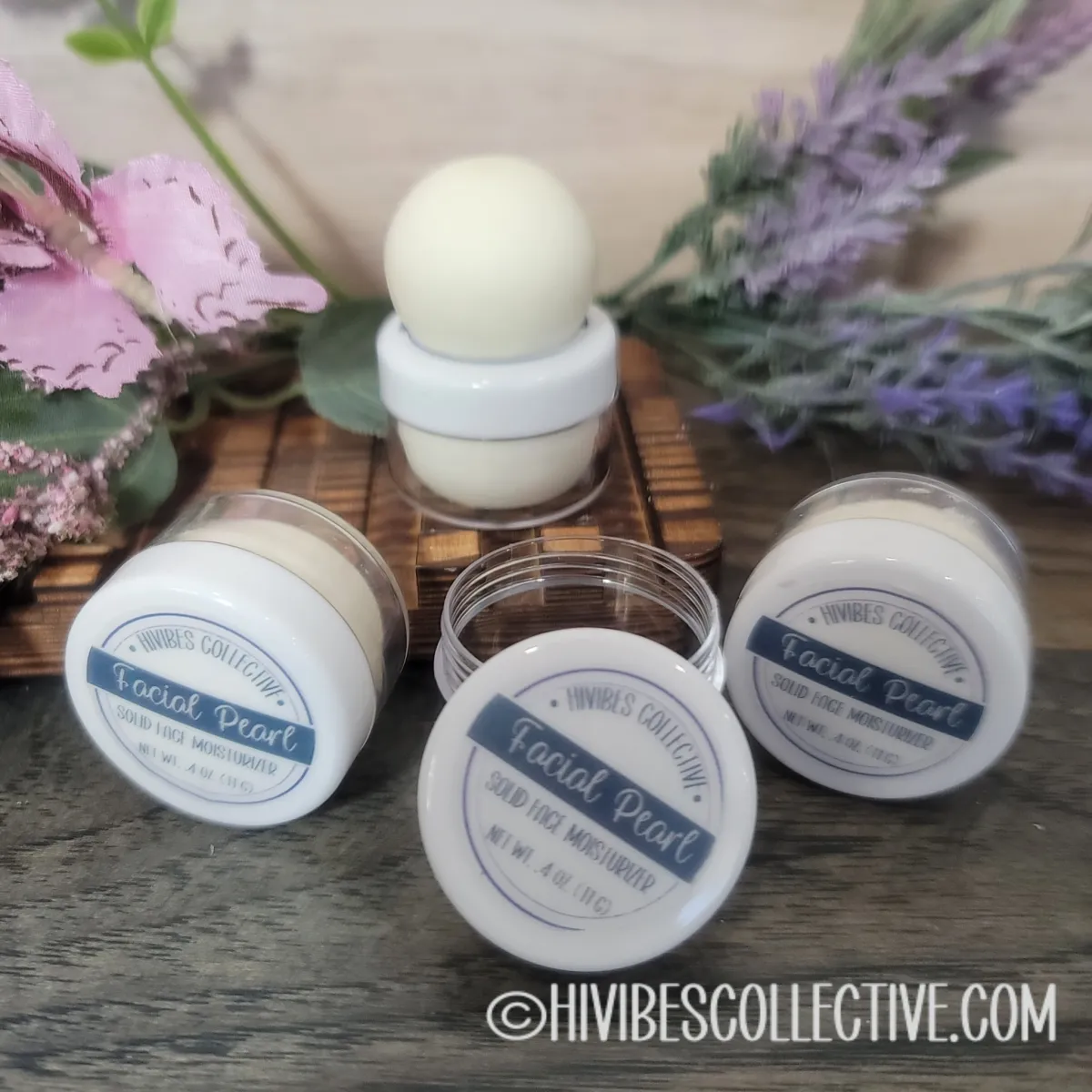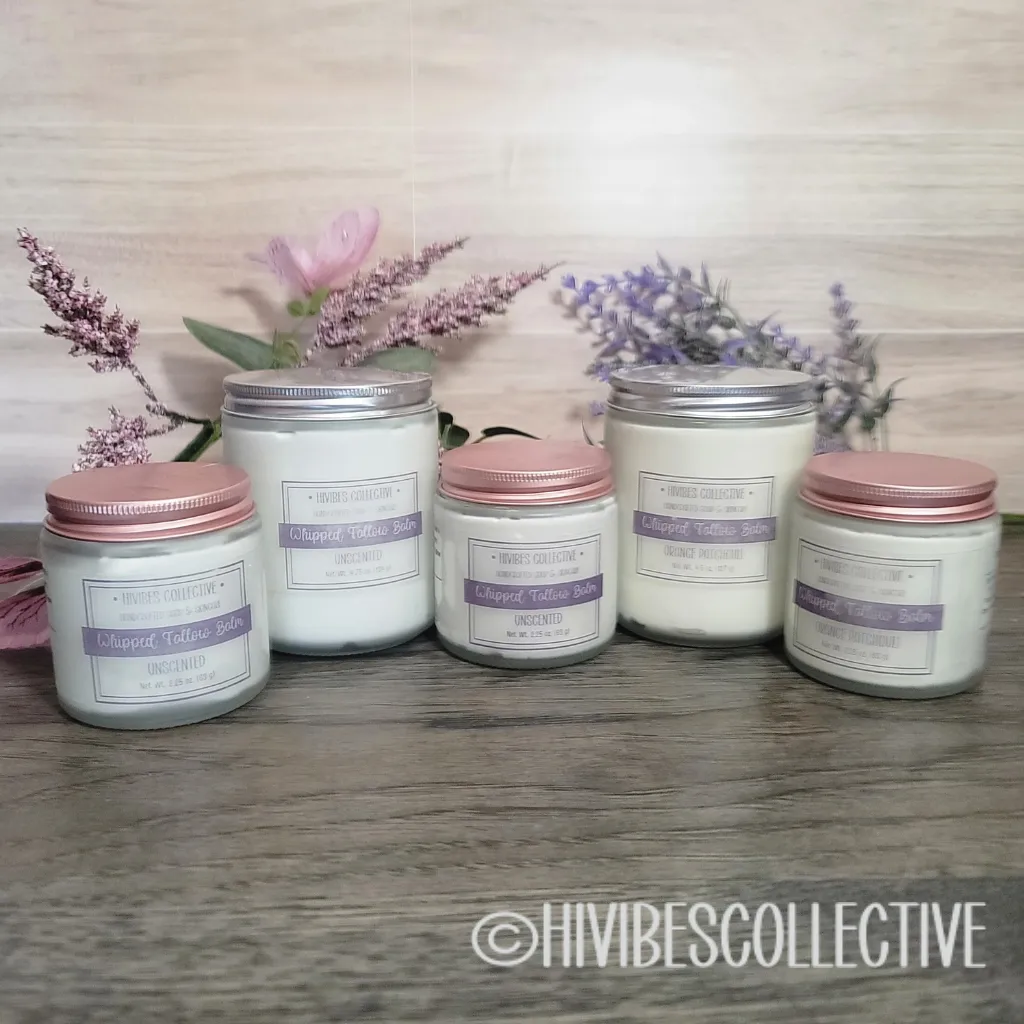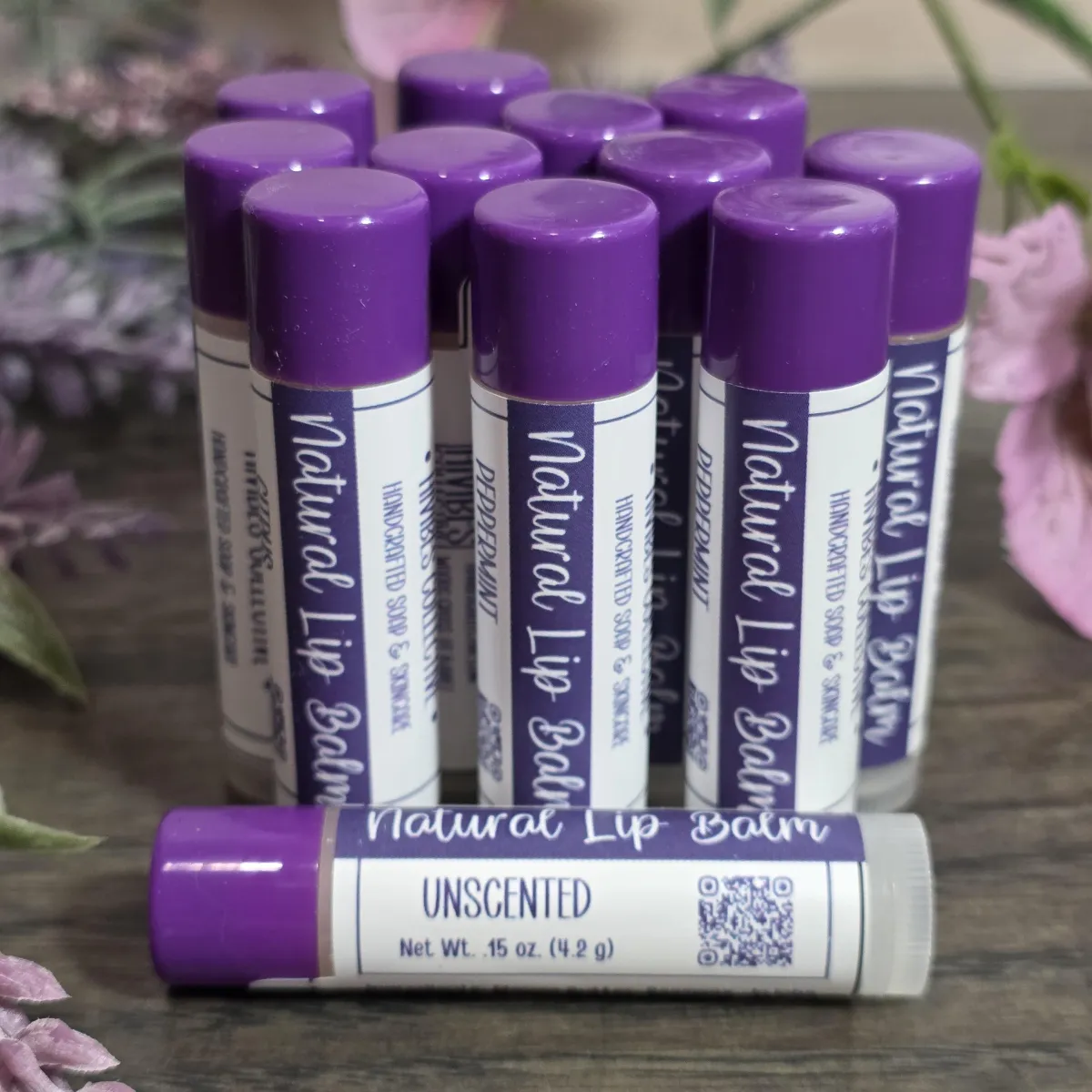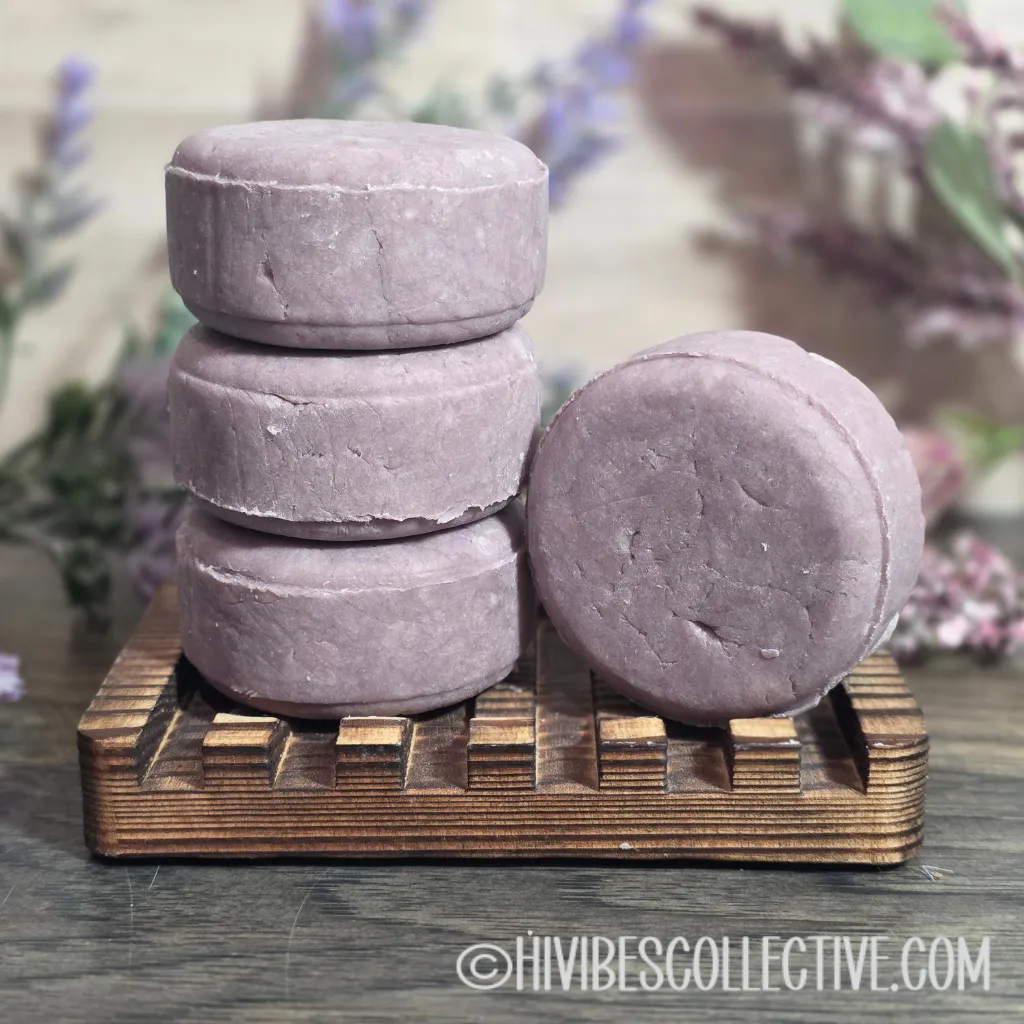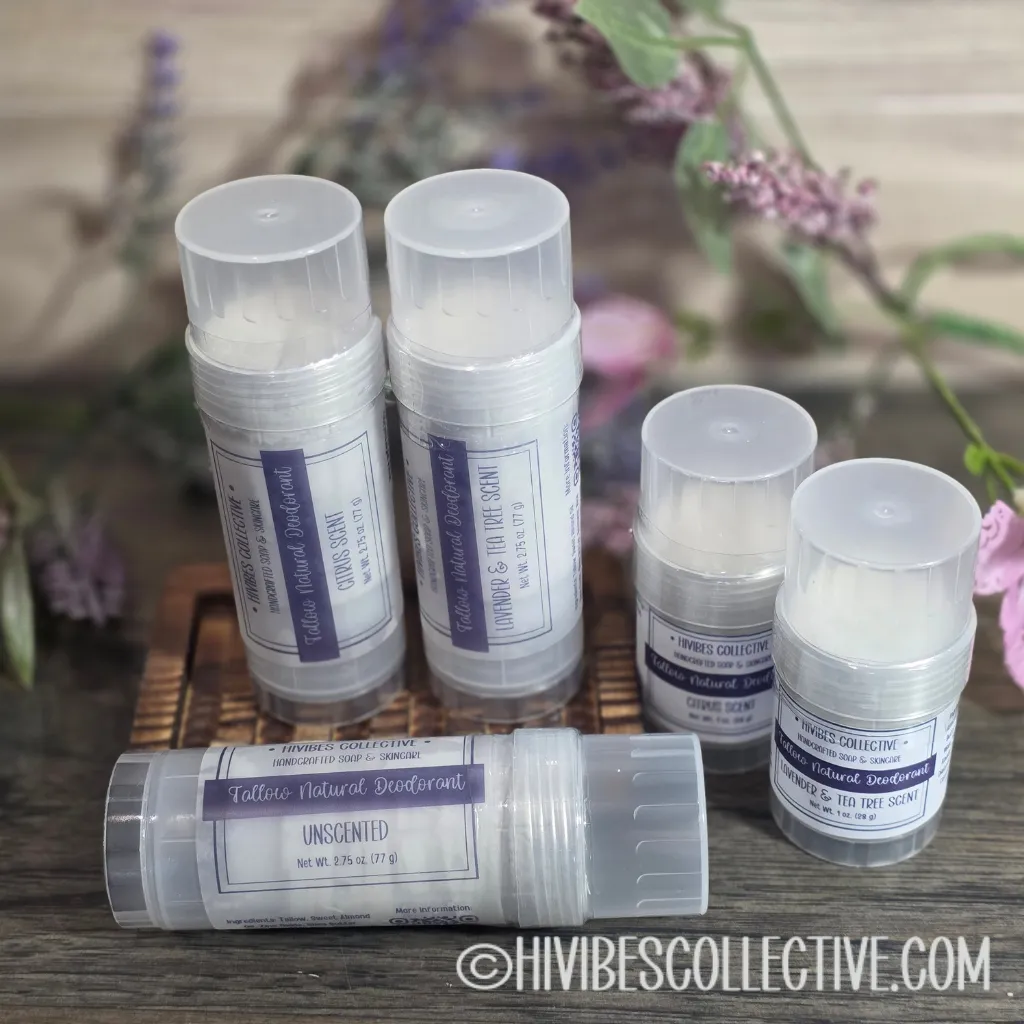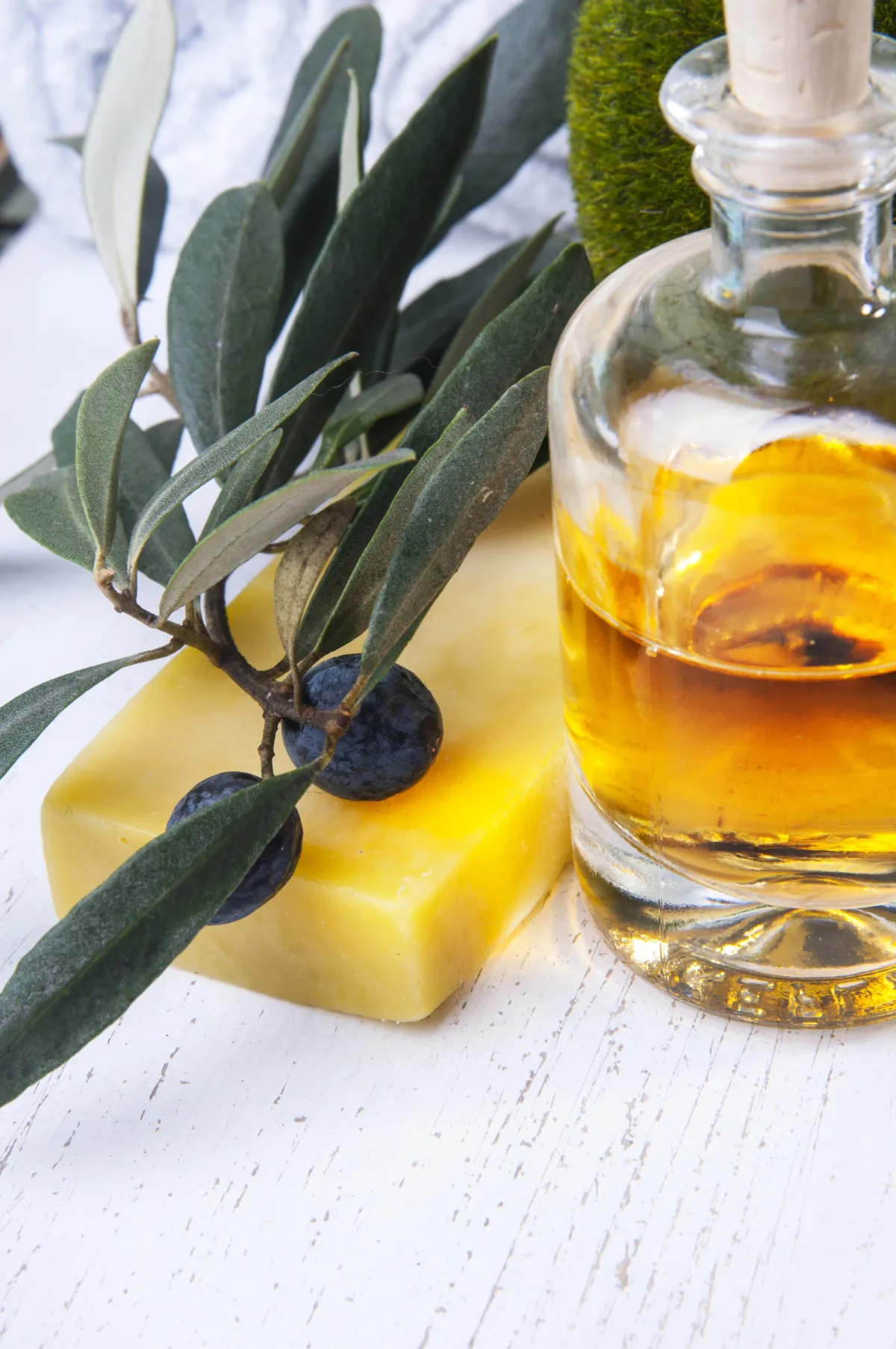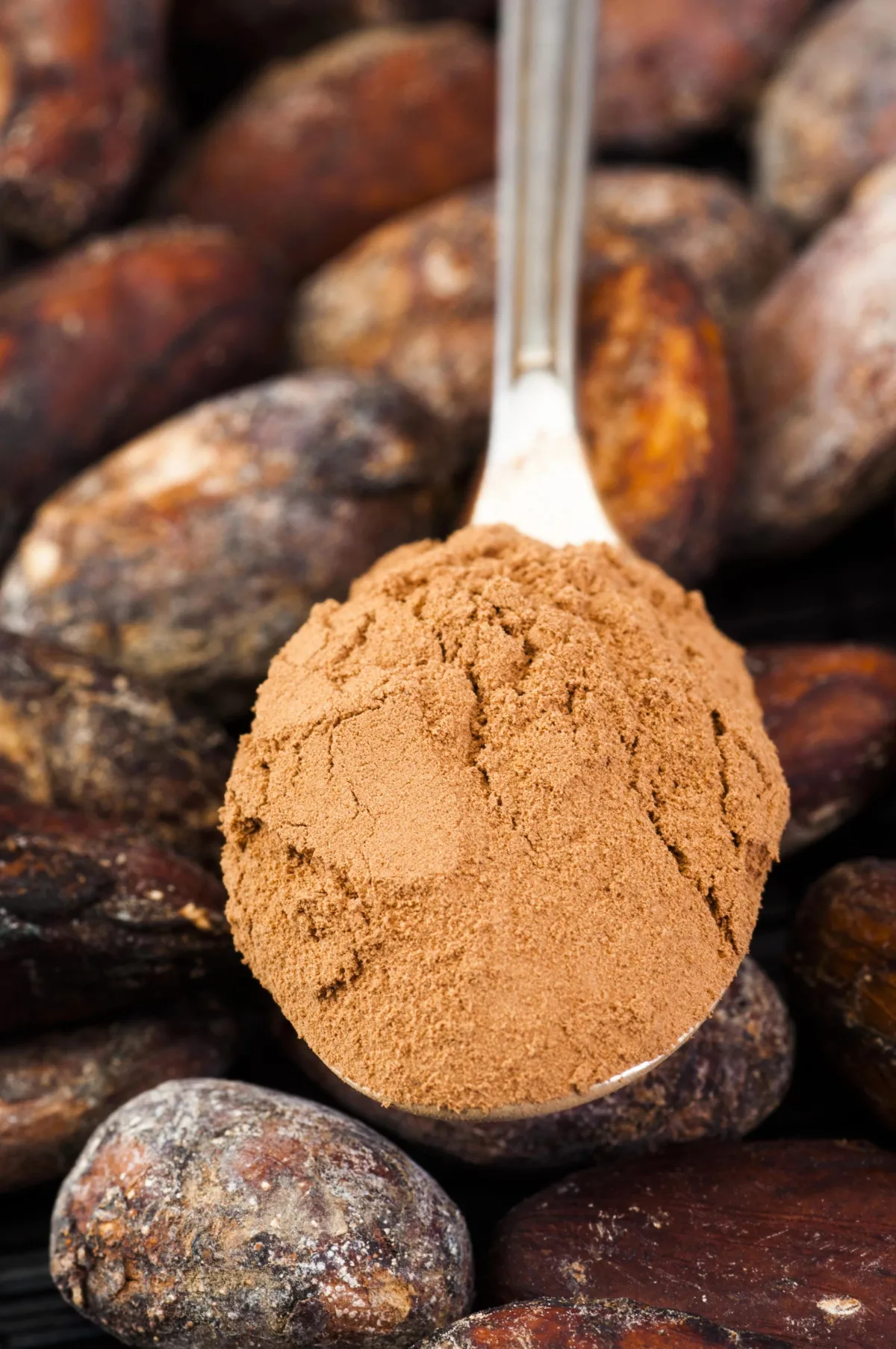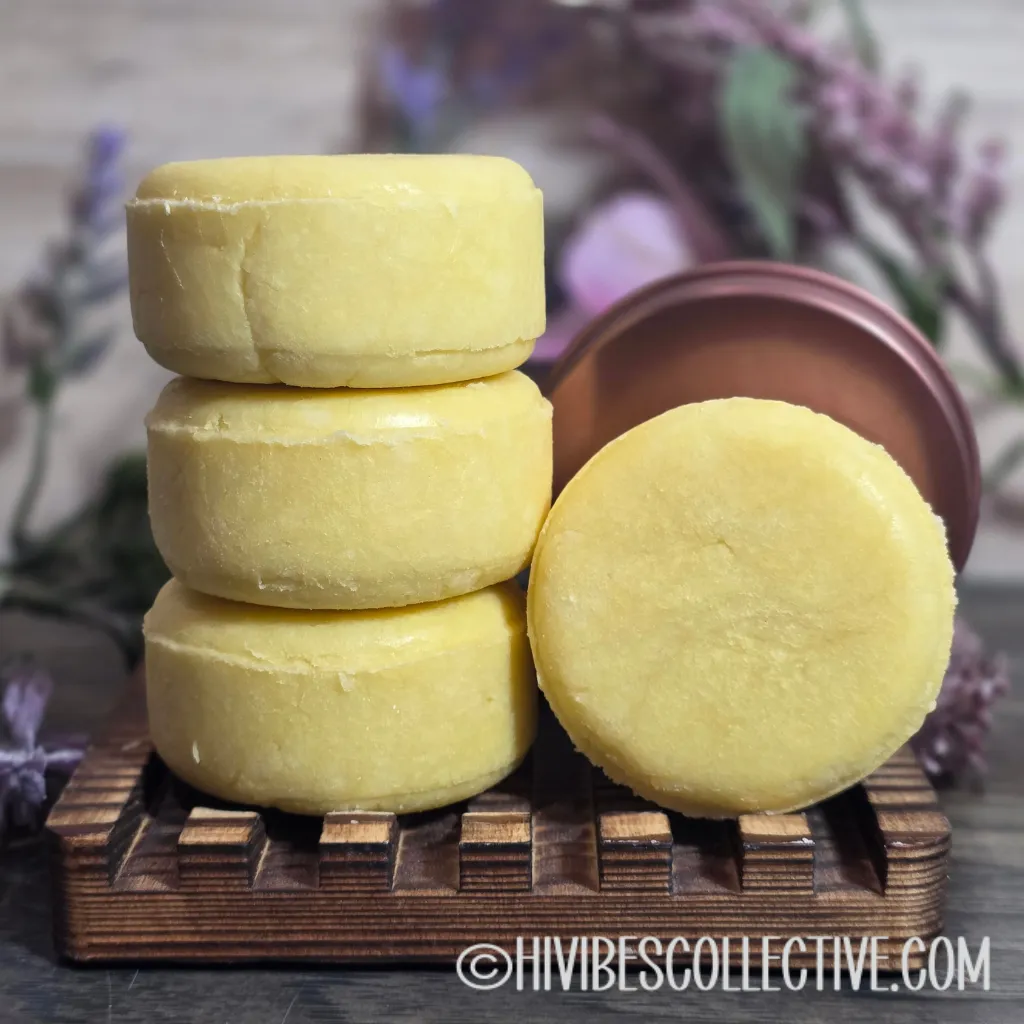Free Shipping for US Orders over $75
Synthetic Ingredients - Syndet
Nature provides an endless palette of stunning hues, making natural colorants the perfect choice for those who want beauty without compromise. Unlike synthetic dyes, which can contain harsh chemicals and artificial additives, natural colorants—sourced from botanicals, clays, and minerals—offer vibrant colors while bringing their own unique skin-loving benefits. From the detoxifying power of Activated Charcoal to the gentle exfoliation of Hibiscus Powder, each ingredient does more than just color your soap; it enhances the overall skincare experience.
Using natural colorants in soapmaking and skincare is a way to embrace purity and simplicity while celebrating the richness of nature. Clays like French Green and Kaolin provide soft, earthy tones while also absorbing excess oil and cleansing the skin . Herbal infusions like Alkanet Root and Indigo create stunning purples and blues, while plant-based powders such as Turmeric and Beetroot Powder bring warm, golden, and rosy tones—each with its own nourishing and skin-supporting properties. Whether you're looking for an alternative to synthetic dyes or simply want to connect with nature’s beauty, natural colorants offer a solution that is as gentle on the skin as it is on the environment.
Sodium Cocoyl Isethionate (sci)
Sodium Cocoyl Isethionate (SCI): The Gentle, Foamy Cleanser
Sodium Cocoyl Isethionate (SCI) is the gold standard for mild, sulfate-free cleansing, making it a top choice for syndet (synthetic detergent) shampoo bars. Derived from coconut oil, SCI is a gentle surfactant that provides rich, luxurious foam without stripping hair of its natural moisture. It’s often called "Baby Foam" because of its ultra-mild nature, making it ideal for sensitive scalps and color-treated hair.
In shampoo bars, SCI creates creamy, dense lather that leaves hair soft, clean, and manageable without the harshness of traditional sulfates. It’s particularly great for curly, dry, or delicate hair types, as it helps to cleanse without over-drying. Plus, it’s biodegradable and eco-friendly, making it a sustainable choice for solid hair care products.
Sodium Lauryl Sulfoacetate (SLSa)
Sodium Lauryl Sulfoacetate (SLSa): The Bubbly Yet Gentle Cleanser
Sodium Lauryl Sulfoacetate (SLSa) is a mild, sulfate-free surfactant that delivers big, fluffy bubbles and deep cleansing power without the harshness of traditional sulfates. Although its name sounds similar to Sodium Lauryl Sulfate (SLS), SLSa is much gentler and derived from natural sources like coconut and palm oils. It’s an excellent foaming agent that helps shampoo bars cleanse effectively while remaining mild on the scalp and hair.
In shampoo bars, SLSa boosts lather and helps remove excess oil, dirt, and product buildup, making it perfect for all hair types, especially those needing a deeper clean. Unlike harsher detergents, it doesn’t cause excessive dryness or irritation, making it a great choice for sensitive scalps and color-treated hair.
Sodium Cocoyl Glutamate
Sodium Cocoyl Glutamate: The Silky-Soft, Moisturizing Cleanser
Sodium Cocoyl Glutamate is an exceptionally mild, sulfate-free surfactant derived from coconut oil and glutamic acid, an amino acid found in plants and the human body. It’s known for its skin-friendly, moisturizing properties, making it an excellent choice for sensitive scalps, baby shampoos, and gentle hair care formulations.
In shampoo bars, Sodium Cocoyl Glutamate provides a light, silky lather that cleanses without stripping moisture or disrupting the scalp’s natural balance. It’s a pH-balanced surfactant, making it ideal for dry, curly, color-treated, or damaged hair. It’s also non-comedogenic and non-irritating, making it a top pick for gentle facial cleansers and scalp-friendly shampoo bars.
Coamidopropyl Betaine (CapB)
Cocamidopropyl Betaine (CAPB): The Versatile, Foam-Boosting Cleanser
Cocamidopropyl Betaine (CAPB) is a gentle, amphoteric surfactant derived from coconut oil. It’s widely loved for its ability to boost foam, enhance cleansing, and improve the mildness of other surfactants, making it a go-to ingredient in shampoo bars, body washes, and facial cleansers. CAPB is known for adding richness to lather while helping to condition the hair and scalp, leaving hair feeling soft and manageable.
In shampoo bars, CAPB works as both a cleanser and a co-surfactant, helping to reduce irritation from stronger surfactants like SLSa while maintaining an effective cleanse. It also has antistatic and conditioning properties, which make it great for taming frizz and improving hair texture. It’s suitable for all hair types, including dry, curly, and color-treated hair, as it cleanses without excessive stripping.
BTMS-50 & BTMS-25
BTMS-50 & BTMS-25: The Luxurious Conditioning Emulsifiers
BTMS-50 and BTMS-25 are conditioning emulsifiers that work wonders in shampoo bars, conditioners, and hair treatments by leaving hair silky, smooth, and detangled. Both are derived from rapeseed oil and contain Behentrimonium Methosulfate, a mild, non-irritating conditioning agent that helps reduce frizz, improve manageability, and add softness to hair. These ingredients not only condition the hair but also act as emulsifiers, helping to blend oils and water-based ingredients into a stable formula.
BTMS-50 vs. BTMS-25: What’s the Difference?
The key difference between the two lies in their conditioning power and additional ingredients: BTMS-50 contains 50% active conditioning ingredients, including Cetearyl Alcohol, which enhances slip and moisture. It also includes Butylene Glycol, which adds an extra hydration boost. This makes BTMS-50 the better choice for deep conditioning, intense moisture, and extra detangling power. BTMS-25 contains 25% active conditioning ingredients, making it a lighter option for those who want a milder conditioning effect. It’s ideal for fine or oily hair types that need some slip without heavy buildup.
Cetyl Alcohol
Cetyl Alcohol: The Silky Emollient & Thickener
Despite its name, Cetyl Alcohol isn’t a drying or irritating alcohol—it’s actually a fatty alcohol derived from coconut or palm oil, known for its emollient, thickening, and conditioning properties. It plays a crucial role in shampoo bars, conditioners, and creams, where it enhances texture, adds richness, and improves moisture retention.
In shampoo bars, Cetyl Alcohol helps solidify the bar while providing slip and softness, making hair easier to detangle. It also works as an emulsifier, helping oils and water-based ingredients blend smoothly. It’s particularly useful in hydrating formulas for dry, curly, or damaged hair because it helps lock in moisture without weighing hair down.
Stearic Acid
Stearic Acid: The Hardening & Moisturizing Powerhouse
Stearic Acid is a naturally occurring fatty acid, often derived from coconut, palm, or shea butter, and is known for its thickening, emulsifying, and hardening abilities. It’s a key ingredient in solid shampoo bars, conditioners, lotions, and even soaps, where it adds structure, enhances creaminess, and provides long-lasting moisture.
In shampoo bars, Stearic Acid helps create a firm, long-lasting bar while also acting as an emollient, helping to soften and smooth hair. It also boosts the conditioning properties of other ingredients, making it especially beneficial for dry, coarse, or frizz-prone hair types.
Sodium Cocoamphoacetate (SCA)
Sodium Cocoamphoacetate (SCA): The Gentle Cleanser & Foam Booster
Sodium Cocoamphoacetate (SCA) is a mild, amphoteric surfactant derived from coconut oil. It is widely used in shampoo and conditioner bars for its gentle cleansing, foam-boosting, and conditioning properties. Unlike harsh sulfates, SCA is non-stripping and pH-balanced, making it ideal for sensitive scalps and all hair types.
One of the key benefits of SCA is its ability to enhance foam and improve rinseability without causing dryness or irritation. It helps create a rich, creamy lather, even in hard water, making it a fantastic addition to solid shampoos, facial cleansers, and body washes. It also boosts the performance of other surfactants, making formulations milder and more effective. In conditioner bars, SCA acts as a co-surfactant that aids in detangling and smoothness. It gently removes excess oil while leaving natural moisture intact, making hair feel soft, clean, and manageable.
Purple Sweet Potato
Purple Sweet Potato: The Vibrant Antioxidant Booster
Purple Sweet Potato is as beautiful as it is skin-loving! This deep purple root is packed with anthocyanins, the same powerful antioxidants found in blueberries and acai.
Used in soapmaking, it creates stunning shades from lavender to deep purple, depending on how it’s prepared. In soapmaking, Purple Sweet Potato Powder provides soft lavender to deep violet hues, with color intensity affected by pH. It pairs beautifully with other natural colorants like Brazilian Purple Clay or Alkanet Root for layered or marbled designs.
For skincare, Purple Sweet Potato is rich in skin-nourishing vitamins and antioxidants, making it a great choice for masks, scrubs, and soothing formulations. It’s known to support collagen production and protect against environmental stressors, helping skin maintain a youthful glow.
Best Uses: Purple-toned soaps for unique, natural color; antioxidant-packed facial masks and scrubs, botanical-infused serums for radiant skin; colorful bath soaks with a skin-loving boost.
Madder Root
Madder Root: The Timeless Botanical for Beautiful Reds & Pinks
Madder root (Rubia tinctorum) has been prized for centuries as a natural dye, historically used to color fabrics in rich shades of red. This vibrant botanical has found a new home in soapmaking and skincare, where it provides gorgeous natural hues ranging from soft pinks to deep reds and purples, depending on how it's prepared. Madder root is not only a stunning colorant but also contains beneficial plant compounds that can help soothe and tone the skin.
In soapmaking, madder root is a versatile natural colorant that can be infused into oils or added as a powder to achieve different shades. Oil infusions tend to yield softer pinks and corals, while adding the powdered root directly to the soap batter can result in bolder reds and purples. The final color is influenced by factors like pH, concentration, and whether the soap contains high-heat oils like coconut. It’s an excellent choice for artistic swirls and layered soaps, adding a natural, earthy beauty to each bar.
For skincare, madder root has been traditionally used in Ayurvedic practices for its purifying and skin-brightening properties. It contains alizarin, a natural compound known for its anti-inflammatory and soothing effects. When infused into oils or toners, it may help promote a healthy, radiant complexion and support even skin tone. Its botanical richness makes it a unique addition to facial masks, herbal balms, and botanical-infused body oils.
Best Uses: Natural pink-to-red colorant for cold-process soaps; herbal oil infusions for soft, rosy hues in skincare products; ayurvedic-inspired masks and serums for skin brightening.
Tumeric
Turmeric: The Golden Glow Giver
Turmeric (Curcuma longa) is a beloved spice and skincare ingredient, known for its anti-inflammatory, antioxidant, and brightening properties. In soap and skincare, it provides a beautiful golden hue while offering skin-calming and complexion-enhancing benefits.
In soapmaking, Turmeric can give shades from soft gold to deep orange, depending on how much is used. It’s an excellent colorant for warm, earthy designs and works well in turmeric-infused soaps that target brightening and clarifying the skin.
For skincare, turmeric is highly valued for its ability to reduce redness, even out skin tone, and fight breakouts. It’s a favorite in face masks, serums, and creams for those looking to achieve a natural glow.
Best Uses: Bright golden color in soap and bath products; face masks for a radiant, even complexion; herbal-infused oils for skin-brightening benefits; ayurvedic-inspired scrubs and treatments.
Cranberry Powder
Cranberry Powder: The Berry Beautiful Booster
Cranberry Powder is a superfood ingredient packed with vitamin C and antioxidants that promote radiant, youthful skin. When used in soapmaking, it provides soft pink to muted rose hues, giving bars a delicate, natural elegance.
In soapmaking, Cranberry Powder’s color is pH-sensitive, meaning it may fade over time or shift to warmer pinks. It works best in cold-process soaps with a high percentage of natural butters and oils.
For skincare, cranberry powder is known for its skin-brightening and anti-aging properties. It helps fight free radicals, supports collagen production, and gives skin a fresh, youthful look. It’s wonderful in facial scrubs, masks, and toners.
Best Uses: Soft pink colorant for cold-process soaps; vitamin-rich facial scrubs and masks; skin-brightening serums and exfoliants; botanical bath soaks with a fruity twist.
Hibiscus Powder
Hibiscus Powder: The Blush of the Botanicals
Hibiscus Powder is nature’s rosy beauty booster, celebrated for its deep pink-to-red hues and skin-loving benefits. Rich in antioxidants, vitamin C, and natural acids, hibiscus has been used in skincare and haircare for centuries to promote glowing skin and strong, healthy hair.
In soapmaking, Hibiscus Powder provides shades from soft pink to mauve, though it may shift depending on pH. It’s a lovely natural colorant for floral-themed soaps and pairs beautifully with other botanicals like rose and chamomile.
For skincare, hibiscus is known as “nature’s Botox” due to its ability to promote skin elasticity, brighten the complexion, and gently exfoliate. It’s perfect for face masks, scrubs, and antioxidant-rich serums.
Best Uses: Soft pink-to-mauve soap colorant; exfoliating facial masks and scrubs; skin-brightening serums and toners; conditioning hair treatments for shine and strength.
Beetroot Powder
Beetroot Powder: The Naturally Bold Blush
Beetroot Powder is a vibrant and nutrient-rich plant-based colorant that provides beautiful shades of pink, red, and burgundy. Packed with vitamins, minerals, and antioxidants, it’s a wonderful addition to both soap and skincare for a natural beauty boost.
In soapmaking, Beetroot Powder creates soft pink to deep magenta tones, though its final color can shift with pH changes. It works best when infused into oils before adding to soap batter.
For skincare, beetroot is a gentle detoxifier that helps revitalize dull skin and promote a healthy glow. It’s often used in lip balms, blushes, and face masks for a natural flush of color.
Best Uses: Bold pink-to-red soap colorant; natural tint for lip balms and blushes; skin-rejuvenating masks and toners; detoxifying bath soaks.
Red Sandalwood Powder
Red Sandalwood Powder: The Earthy Elegance
Red Sandalwood Powder (Pterocarpus santalinus) is a deep reddish-brown botanical powder traditionally used in Ayurveda for skin purification and rejuvenation. Unlike aromatic sandalwood, this version is used primarily as a natural colorant and skincare ingredient.
In soapmaking, Red Sandalwood Powder creates warm red, terra-cotta, or brown tones, making it an excellent choice for earthy and rustic soap designs. It also provides a subtle exfoliating effect, enhancing the texture of bars.
For skincare, red sandalwood is prized for its ability to even skin tone, calm inflammation, and gently detoxify. It’s often used in facial masks, scrubs, and spot treatments to promote clear, radiant skin.
Best Uses: Warm red-to-brown natural soap colorant; ayurvedic facial masks for glowing skin; gentle exfoliating scrubs and powders; skin-balancing toners and pastes.
Mango Powder
Mango Powder: The Exotic Skin Brightener
Mango Powder, made from dried mango fruit, is a skin-loving powerhouse rich in vitamin C, enzymes, and antioxidants. Used in skincare for its brightening and exfoliating properties, it gently dissolves dead skin cells, leaving skin fresh and radiant.
In soapmaking, Mango Powder provides soft golden hues while offering a boost of natural fruit enzymes that help refresh the skin. It’s a great addition to summer-inspired soaps and tropical-themed formulations.
For skincare, mango is a natural skin-rejuvenator, helping to even skin tone, reduce dullness, and nourish the skin with hydration. It’s perfect in face masks, fruit enzyme peels, and body scrubs.
Best Uses: Soft golden soap colorant with mild exfoliating properties; skin-brightening face masks and scrubs; vitamin-rich body butters and lotions; fruit-infused facial peels for a healthy glow.
Alcanet Root
Alkanet Powder: The Herbal Indigo
Alkanet Powder, derived from the roots of Alkanna tinctoria, is a stunning deep purple-to-indigo colorant used in traditional herbal medicine and natural dyeing for centuries. It’s one of the best natural ways to achieve shades of deep violet, blue, or burgundy in soap.
In soapmaking, Alkanet Powder provides colors ranging from soft lavender to deep purple depending on pH and infusion time. It works best when infused into oils before adding to soap batter.
For skincare, alkanet is known for its soothing and cooling properties, making it great for calming irritated skin. It’s often used in lip balms, herbal salves, and soothing creams.
Best Uses: Deep purple natural soap colorant; herbal-infused oils for balms and salves; skin-calming facial treatments; natural lip and cheek tints.
Activated Charcoal
Activated Charcoal: The Ultimate Deep Clean Detoxifier
Activated Charcoal is the superstar of detoxification, known for its deep-cleansing, purifying, and oil-absorbing properties. Used for centuries in traditional medicine, this jet-black powder is made by superheating natural materials like coconut shells or hardwood, creating a highly porous substance that traps toxins and impurities like a magnet.
In soapmaking, Activated Charcoal is a dramatic, bold colorant that gives deep black, smoky gray, or speckled effects. But it’s more than just a pretty color—it’s famous for its ability to draw out dirt, oil, and impurities, making it an excellent choice for acne-prone or oily skin.
For skincare, Activated Charcoal is used in face masks, cleansers, and detoxifying scrubs to help clarify the skin, minimize pores, and control excess oil. It’s also a common ingredient in deodorants and scalp treatments, helping to neutralize odors and balance oil production.
Best Uses: Bold black soap colorant with purifying benefits; deep-cleansing face masks for acne-prone skin; detoxifying body scrubs and deodorants; oil-balancing scalp treatments and shampoos.
Indigo
Indigo Powder: The Deep Blue Botanical
Indigo Powder, derived from the Indigofera tinctoria plant, has been used for centuries as a natural dye for textiles, body art, and cosmetics. This rich botanical colorant produces stunning shades of deep blue, denim, and even soft grayish hues, depending on its preparation and the pH of the soap.
In soapmaking, Indigo Powder creates gorgeous blues that range from soft sky tones to deep navy. It blends well with other natural colorants, allowing for unique shades and artistic effects. Indigo is also gentle on the skin, making it a favorite for those who want natural, skin-safe colorants in their handmade soaps.
For skincare, indigo is known for its calming and anti-inflammatory properties, making it a popular ingredient in soothing balms, salves, and skin treatments. Traditionally, it has been used to help reduce irritation, support skin healing, and even balance excess oil production.
Best Uses: Rich blue natural soap colorant; gentle skincare treatments for soothing irritation; herbal-infused oils for balms and salves; blending with clays and other botanicals for custom shades.
Calamine Powder
Calamine Powder: The Soothing Pink Protector
Calamine Powder isn’t just a pretty pink—it’s a gentle skincare hero known for its calming, soothing, and anti-itch properties. A blend of zinc oxide and iron oxide, this soft pink powder has been used for centuries to soothe irritation, reduce redness, and protect sensitive skin.
In soapmaking, Calamine Powder gives a soft blush-pink hue while also providing a silky, soothing feel to the lather. It’s a fantastic choice for soaps made for sensitive or dry skin since it helps to calm irritation and balance oil production.
For skincare, calamine is a go-to for cooling sunburns, soothing bug bites, and reducing redness. It’s often used in face masks, lotions, and spot treatments to help with acne, rashes, and irritation-prone skin.
Best Uses: Soft pink natural soap colorant; soothing soaps for dry and sensitive skin; calming face masks and acne treatments; skin-protecting lotions and balms.
Matcha Powder
Matcha Powder: The Zen Green Glow
Matcha Powder isn’t just for tea—it’s a skincare powerhouse packed with chlorophyll, antioxidants, and skin-loving compounds. This finely ground green tea powder has been used in Japanese beauty rituals for centuries to reduce inflammation, fight free radicals, and brighten the skin.
In soapmaking, Matcha Powder creates a beautiful green hue while providing anti-aging and detoxifying benefits. It’s a great choice for gentle, refreshing soaps designed for all skin types.
For skincare, matcha is a favorite in face masks, scrubs, and toners for its ability to soothe redness, fight acne, and give skin a healthy glow. It’s also known for its natural caffeine content, which can help reduce puffiness and revitalize tired skin.
Best Uses: Bright green natural soap colorant; energizing face masks and scrubs; detoxifying facial cleansers and serums; soothing bath soaks and lotions.
Moringa Powder
Moringa Powder: The Green Superfood for Skin
Moringa Powder, made from the nutrient-rich leaves of the Moringa tree, is a powerhouse of antioxidants, vitamins, and minerals. Often called the “miracle tree”, moringa has been treasured in traditional medicine for its skin-rejuvenating and anti-inflammatory properties.
In soapmaking, Moringa Powder gives soaps a soft green hue, though the final shade can vary depending on pH. It also adds a boost of skin-loving nutrients that help hydrate, balance, and nourish.
For skincare, moringa is used in face masks, serums, and scrubs to help reduce signs of aging, even skin tone, and provide deep nourishment. It’s particularly great for dull or tired skin in need of a refresh.
Best Uses: Light green soap colorant with skincare benefits; antioxidant-rich facial masks and serums; revitalizing body scrubs and balms; deeply nourishing lotions and creams.
Cocoa Powder
Cocoa Powder: The Decadent Brown Beauty
Cocoa Powder isn’t just for chocolate lovers—it’s also a rich, skin-nourishing ingredient full of antioxidants, polyphenols, and skin-softening compounds. Used for centuries in skincare, cocoa helps boost circulation, hydrate skin, and fight free radicals.
In soapmaking, Cocoa Powder creates gorgeous brown hues, ranging from light mocha to deep chocolate tones. It also adds a touch of creaminess to the lather, making it a favorite for luxurious, indulgent soaps.
For skincare, cocoa is often used in face masks, scrubs, and body butters to help improve elasticity, hydrate dry skin, and provide a healthy glow. Plus, its natural scent can give skincare products a delicious, subtle chocolate aroma.
Best Uses: Rich brown natural soap colorant; antioxidant-packed face masks and scrubs; nourishing body butters and lotions; skin-softening bath soaks.
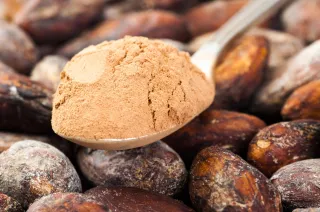
HiVibes Collective
Handcrafted tallow soap & skincare using the very best local or authentically sourced ingredients.
Woods Cross, Utah, 84087
Handcrafted Hair & Skincare
©2025 HiVibes Collective • *Orgonite(TM) is a trademark of its respective owners.

